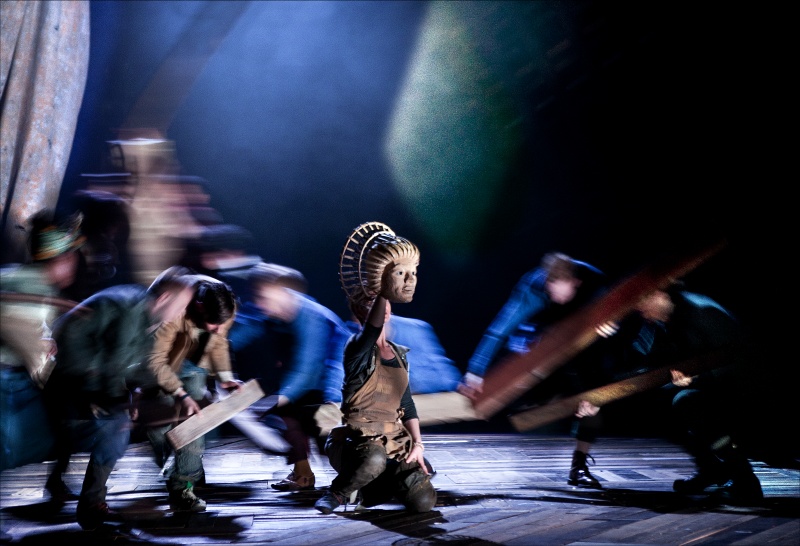 Text and puppetry are different languages. Puppetry speaks through image, movement, and rhythm. Text deals in abstraction – ideas – and specificity, of voice, expression, and thought. Text is of our world, shaping our everyday experience continuously, whilst puppetry retains an otherworldliness which is sometimes part of its appeal. For these reasons puppetry adaptations of classic texts are a complicated business, albeit one in which collaborating company Handspring (renowned in the UK for their work on Warhorse) have made a name for themselves in their native South Africa for tackling, with puppetry productions of Faust and Woyceck, amongst others.
Text and puppetry are different languages. Puppetry speaks through image, movement, and rhythm. Text deals in abstraction – ideas – and specificity, of voice, expression, and thought. Text is of our world, shaping our everyday experience continuously, whilst puppetry retains an otherworldliness which is sometimes part of its appeal. For these reasons puppetry adaptations of classic texts are a complicated business, albeit one in which collaborating company Handspring (renowned in the UK for their work on Warhorse) have made a name for themselves in their native South Africa for tackling, with puppetry productions of Faust and Woyceck, amongst others.
In this co-production with Bristol Old Vic which first opened in Spring 2013, the puppetry, though seeded throughout, largely relates to the play’s text as an expression of magic and otherworldliness. A Midsummer Night’s Dream is a play sprinkled with fairy dust throughout and this production has the tools to realise this fully. Titania’s fairy retinue are an unsettling hotchpotch of sideshow homunculi steeped deep in the uncanny valley, or sometimes simply a collection of animated planks, used to create movement on stage and weird shapes round the roughly-hewn face of their queen. The fairy king is, likewise, a giant carved face, used expressively as a handheld mask above the head alongside a single giant puppet hand, whose clever articulation is sometimes overused in the production’s reiterated metaphors of the gods’ control and influence over its mortal characters. In the scenes between the lovers, puppetry persists through the endearing presence of an object-animation Puck, the most characterful of all the puppets (though the decision to have him voiced by three actors can sometimes make his transformation hard to follow), but largely, there’s a sense in this version of the production of ‘them and us’.
The human interactions, especially between the lovers and a hilarious collection of rude mechanicals clearly having a ball on stage, zing along, supported by some beautifully choreographed slapstick (the movement, by Mimefest favourite Andrew Dawson, is excellent throughout) and fluid scene changes. Yet the larger scale sequences of puppetry can feel hit and miss – the ensemble work animating planks is not always clean or focussed enough. It isn’t surprising to see from the programme that most performers here were new to puppetry.
This is one of the funniest Midsummer Night’s Dreams I have seen, hugely enjoyable, and packed with invention but there’s often a sense of gear change between the human and puppetry scenes that seems to undermine its larger ambitions.
Because this is show that wants to make a point about puppetry. The programme speaks about placing the story in a future post-technological society, where puppets and votive figures have assumed new resonance. The classic doubling of Hippolyta and Titania is given a new edge as the bride-to-be consciously assumes the goddess mask she’s has been carving and there’s a masque scene which makes quite explicit the central metaphor of supernatural control over human relationship that the production wishes to assert. Yet, over-ambition is a generous flaw in theatre and in this production, with its rich images, detailed performances and plethora of visual theatre languages, there’s much to inspire theatre makers and audiences alike.

